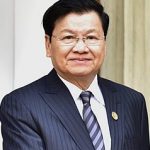Politics
Laos Politics
This page explores Laos’s political structure incorporating real-time RSS feed news and videos. By harnessing the power of RSS feeds, visitors can stay informed about the latest developments in Laos’s politics as they happen. The dynamic nature of these feeds ensures that users receive up-to-the-minute updates on political events, policy changes, and significant milestones, enabling them to stay abreast of the ever-evolving political scene.

Thongloun Sisoulith
5th General Secretary of the Lao People’s Revolutionary Party Central Committee
Incumbent
Assumed office
15 January 2021
Image credit
Laos, officially known as the Lao People’s Democratic Republic, operates under a one-party socialist system. The political structure of Laos is characterized by the dominance of the Lao People’s Revolutionary Party (LPRP), which holds power at all levels of government. At the apex of political power in Laos is the Lao People’s Revolutionary Party, which functions as the ruling party. The General Secretary of the LPRP holds significant influence and acts as the de facto leader of the country. The party’s Central Committee, consisting of senior party officials, formulates policies and sets the direction for the country.
The executive power is exercised by the President, who is elected by the National Assembly, Laos’ unicameral legislative body. The President serves as the head of state and government, representing the country both domestically and internationally. The government structure also includes the Prime Minister and the Council of Ministers, who are responsible for policy implementation and day-to-day administration.
The National Assembly, comprising members elected through a single-party system, is the highest legislative body. While the National Assembly is considered the legislative branch, its decision-making power is largely influenced by the Lao People’s Revolutionary Party. The National Assembly reviews and approves legislation, ratifies international agreements, and exercises oversight over the executive branch.
Political pluralism and opposition parties are limited in Laos. The LPRP maintains a dominant role in shaping policies and controlling the political landscape. Freedom of speech, assembly, and press are also restricted, with limited space for independent media and civil society organizations. In conclusion, Laos operates under a one-party socialist system with the Lao People’s Revolutionary Party holding significant power. The President, elected by the National Assembly, serves as the head of state and government. While efforts have been made to promote economic development and improve governance, political pluralism and freedom of expression remain limited in Laos.
Unless other sources are listed, original content is provided by ChatGPT. ChatGPT may produce inaccurate information about people, places, or facts. #Kyrgyzstan #KyrgyzstanPolitics #KyrgyzstanNews #KyrgyzstanNewsToday #KyrgyzstanRSSFeed #BlahFace



